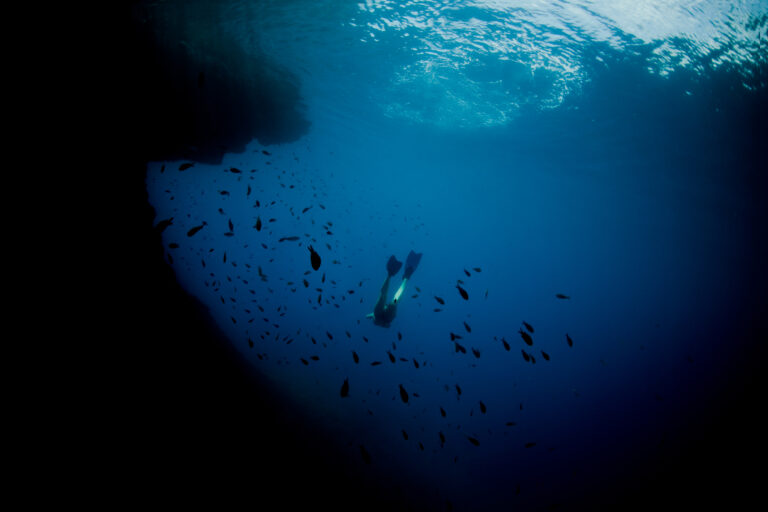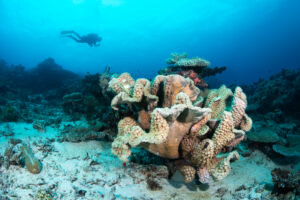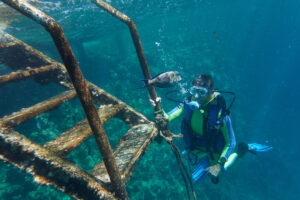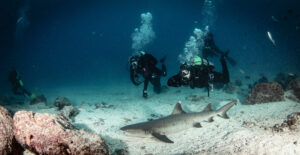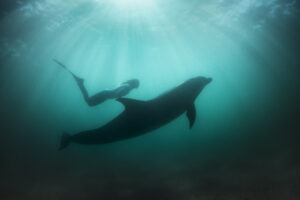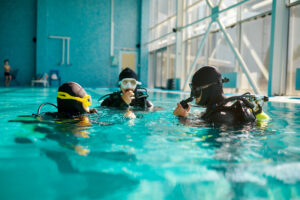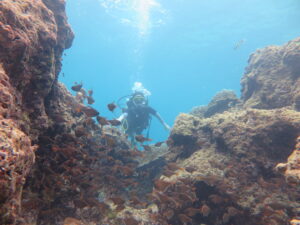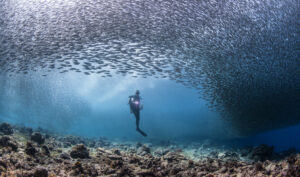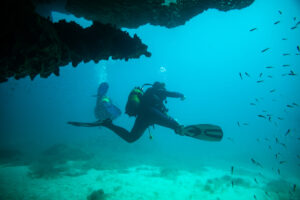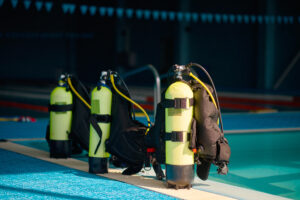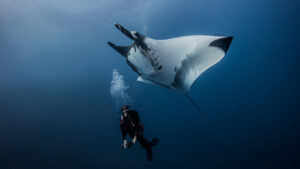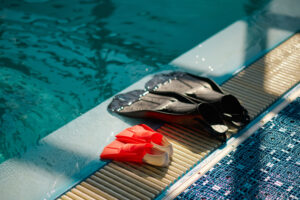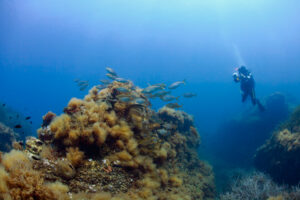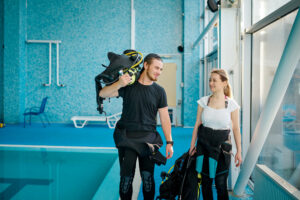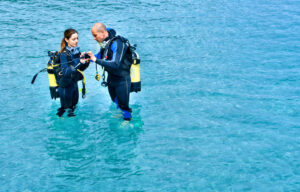What is Night Diving?
Night diving is a thrilling and unique scuba diving experience that occurs after the sun has set, opening up a world of underwater wonders unseen during the day. It offers divers an opportunity to witness the nocturnal behaviors of marine life and the vibrant colors that are often lost in the daylight. The contrast between the darkness of the water and the focused beam of a dive light creates an atmosphere of mystery and excitement, making night diving an appealing adventure for those looking to experience something beyond the typical daylight dives.
Historical Development of Night Diving
The practice of night diving has evolved significantly since the early days of scuba diving. Initially, it was a daring endeavor limited to the most adventurous divers due to the rudimentary equipment and lack of proper lighting. In the mid-20th century, as scuba technology advanced, more divers began experimenting with night dives. Early pioneers used basic underwater torches and rudimentary navigation techniques, often relying on the moonlight to illuminate their path.
As the popularity of scuba diving grew, so did the interest in night diving. The development of advanced lighting systems, such as high-intensity discharge (HID) and light-emitting diode (LED) lights, revolutionized night diving by providing brighter and more reliable illumination. These advancements allowed divers to safely explore deeper and more complex underwater environments at night.
Significant milestones in the history of night diving include the introduction of specialized night diving courses by major diving organizations in the 1980s. These courses provided divers with the skills and knowledge needed to safely navigate and enjoy the underwater world after dark. Over the years, night diving has become an integral part of the scuba diving community, with numerous destinations around the world offering guided night dives to showcase the unique and vibrant nocturnal marine life.
Preparations for Night Diving
Preparing for a night dive requires special attention to equipment and training to ensure safety and enjoyment. Essential equipment includes primary and backup dive lights, glow sticks, and dive computers with backlighting. Primary dive lights should be powerful enough to illuminate a wide area, while backup lights are crucial in case the primary light fails. Glow sticks or chemical lights can be attached to the diver and their equipment for easy identification and communication in the dark.
Training and certification are important aspects of preparing for a night dive. Many diving organizations offer specialized night diving courses that cover essential skills such as underwater navigation, light handling, and communication techniques. These courses also emphasize the importance of the buddy system, where divers are paired to monitor each other and enhance safety.
Safety checks before a night dive are more stringent than those for daytime dives. Divers must ensure all equipment is functioning correctly, particularly their lights and backup systems. The buddy system is reinforced with specific protocols for night diving, such as maintaining close proximity and establishing clear communication signals. Additionally, a thorough briefing about the dive site, expected conditions, and emergency procedures is essential to prepare divers for the unique challenges of night diving.
Environmental Considerations
Night diving presents a different set of environmental conditions compared to daytime diving. Underwater environments can change drastically after sunset, with many marine species becoming more active. Coral reefs, for instance, exhibit a vibrant display of bioluminescence and nocturnal creatures such as octopuses, lobsters, and certain fish species emerge from their daytime hiding spots.
The impact of night diving on marine life and ecosystems is an important consideration. While night diving allows for the observation of unique behaviors and species, it is crucial to minimize ecological disturbance. Divers are advised to avoid shining their lights directly on marine animals for prolonged periods and to maintain a respectful distance to prevent stress or harm. Additionally, responsible night diving practices include not touching or disturbing the delicate underwater habitats.
To further protect the marine environment, divers are encouraged to participate in night dives led by experienced guides who are knowledgeable about the local ecosystem. These guides can provide valuable insights into the behavior of nocturnal marine life and ensure that divers adhere to best practices for environmental stewardship.
Common Locations for Night Diving
Night diving can be enjoyed in various locations around the world, each offering unique underwater experiences. Popular destinations for night diving include tropical coral reefs, coastal regions, and certain freshwater environments. Each location presents its own set of marine life and underwater landscapes, making night diving a diverse and enriching activity.
The warm waters of the Caribbean are renowned for their vibrant coral reefs and abundant marine life, making them ideal for night diving. Divers in these regions can encounter a plethora of nocturnal creatures such as nurse sharks, parrotfish, and bioluminescent plankton. The Red Sea is another prime destination for night diving, offering clear waters and a chance to see the elusive Spanish dancer, a type of large and colorful nudibranch.
In the Indo-Pacific region, locations such as Bali and the Maldives provide spectacular night diving opportunities. These waters are home to an array of nocturnal species, including the mesmerizing manta rays that can be observed feeding at night under artificial lights. Coastal areas in temperate regions, such as the kelp forests of California, also offer unique night diving experiences where divers can witness the behavior of species like the horn shark and various crustaceans.
Challenges and Risks of Night Diving
Night diving poses increased risks and challenges compared to daytime diving, primarily due to reduced visibility and the need for artificial lighting. Navigational difficulties are common, as familiar landmarks may appear different or be harder to locate in the dark. Divers must rely on their dive lights to see and communicate, which can be disorienting if lights fail or visibility is poor.
The potential for equipment failure, particularly lighting, is a significant risk in night diving. Divers must carry multiple backup lights and ensure their primary light source is reliable. Navigational aids, such as compasses and underwater markers, are essential for maintaining orientation and ensuring a safe return to the starting point.
Emergency procedures for night diving require additional planning and preparation. Divers must be proficient in handling emergencies in low-light conditions, such as dealing with entanglement or managing a lost buddy situation. Clear communication and predefined signals are crucial for coordinating responses to any issues that may arise during the dive.
To mitigate these risks, thorough planning and adherence to safety protocols are essential. Divers should always inform someone on the surface of their dive plan and expected return time. Conducting a detailed pre-dive briefing, maintaining close proximity to the dive buddy, and practicing good buoyancy control are key factors in ensuring a safe and enjoyable night diving experience.
Key Takeaways
Night diving offers a unique and thrilling experience, revealing the underwater world in a new light. It requires special equipment, training, and preparation to ensure safety. By understanding the environmental impact and practicing responsible diving, enthusiasts can enjoy the wonders of night diving while preserving the delicate marine ecosystems.

